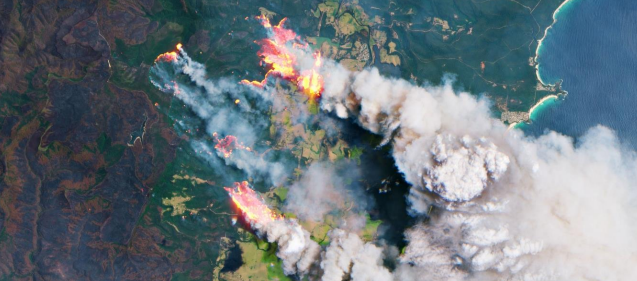Biodiversity and Habitat Loss
In this set of three activities, students will start with a reading assignment that introduces vocabulary and ideas that are key to considering the relationship between climate change and ecosystems. A field survey of a local area, which can be carried out using home-made equipment, is extended to include a measurement of biodiversity that can later be used to compare the likely resilience of different regions. In the final activity, students use the Climate from Space web application to explore how a range of appropriate factors describing the habitat of a local species have changed, relating this to recent and potential changes in the population of the species
Subject Geography, Science, Earth Science, Biology, Ecology
- Define keywords related to the topic
- Explain why biodiversity is important, including climate impacts
- Carry out a field survey of plant life
- Calculate a measure of biodiversity from a field survey
- Use the Climate from Space web application to explore changes to abiotic factors affecting a habitat
- Evaluate the effect of habitat changes on a local species

- Quadrat – one per group
- Camera or smartphone – one per group (optional)
- Internet access or/and field guide to local plants – one per group
- Student worksheet 2 (2 pages)
- Biodiversity Activity 2 spreadsheet from the Biodiversity and habitat loss section of the ESA Climate for Schools webpage (https://climate.esa.int/en/educate/climate-for-schools/) or/and calculator

Did you know?
We share our planet with millions of other living species – animals, plants, fungi and smaller organisms. Scientists refer to this variety of life as biodiversity. Healthy land ecosystems are home to many herbivores (animals that feed on plants), fewer carnivores (animals that feed on herbivores) and a small number of top carnivores (carnivores that feed on other carnivores). Biodiversity sustains this pyramid and is
one way we can measure the health of the planet or areas of it. Biodiversity is especially high in forests, which contain more than 80% of all land-based animal and plant species. Biodiversity is endangered by a lot of factors.

Global Stocktake: how space drives climate action
Almost 200 countries are gathering in Dubai to attend the biggest climate event of the year. COP28 – the 2023 United Nations climate change summit – isn’t just another conference though. For the first time,...


